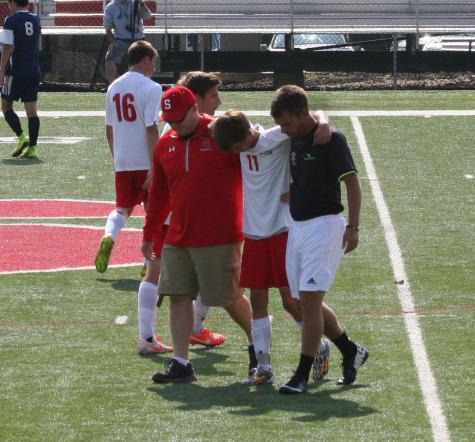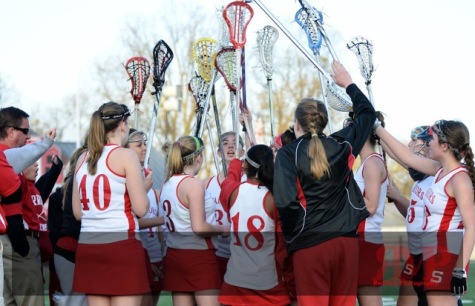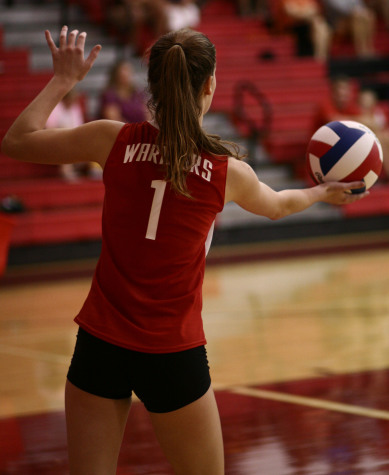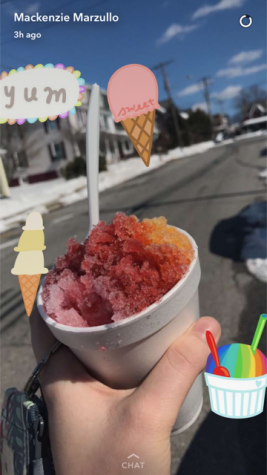How to Deal With Sports Injuries
September 25, 2014

Sitting on the sideline due to an injury just doesn’t compare to playing on the field or court with your team.
Athletic trainer Mike Fleming has treated student athletes for 12 years. He has always stressed to us the importance of injury prevention.
“Student athletes should prevent injuries by doing proper strength and conditioning in a weight room during their off season to prepare for their sport,” said Fleming. “[Athletes should] actually show up to off season workouts with their coach to prepare for their sport and only playing one sport per season not playing a school sport and one or more club sports at the same time.”
Even if student athletes comply to the rules of injury prevention, some are still unlucky and injure themselves. While treating his athletes, Fleming likes to follow the RICE protocol.
“For the first 72 hours, you should utilize the RICE principle which is rest, ice, compression, and elevation,” explained Fleming. “After the 72 hours, if the injury calls for it, you can start doing heating to loosen up the area, increase blood flow, and then move on to strengthening exercises to return the joints or injured area to its full activity level for playing in sports again.”
Even though there are a lot of ways to prevent injuries, some student athletes will still have the misfortune of getting hurt. Sophomore volleyball player Jordyn Blucher, senior lacrosse and field hockey player Katelyn Welch, and myself, a senior volleyball player, have all experienced the setback of different sport injuries.
Jordyn Blucher- Knee Injury

Jordyn Blucher was at a club volleyball tournament during the spring of 2014 in Virginia when she tore her lateral meniscus.
“To fix it, I had to undergo surgery to reconstruct my knee.” said Blucher. “I had a bucket handle tear, so they cut some cartilage and sewed the two pieces back together.”
Following Blucher’s surgery, she went through Fleming’s rehab program everyday for one to two hours.
“During rehab, I had a lot of strength training for my leg,” said Blucher. “So [I did] leg extensions, leg curls, calf raises, squats etc. I rode the bike a lot and once I was able to, I started to run. I also iced a lot.”
Blucher was concerned that she would not be able to try-out for the approaching volleyball season, but with hard work during rehab, she was able to make the junior varsity team.
“Advice that I give to other student athletes that have injured themselves is to stay positive and be patient!” said Blucher. “It’s depressing to have to sit out and take time off, but it’s better to take your time and heal properly to prevent further injuries.”

Katelyn Welch- Ankle Sprain
In Welch’s situation, her injury lasted a very long time. During a lacrosse game she suffered from a very bad sprain that tore her ligament, and over time, another ligament tore due to overcompensation and playing on the injury without letting it heal. Later on in a field hockey game, Welch got hit and chipped a bone in her ankle, which was misdiagnosed, so she continued to play on it.
“I had to have a brostrom repair surgery done to repair [the ankle].” said Welch. “That was an eight month rehab. I started off in a cast for 10 days then got the stitches removed and went into rehab slowly by just moving my ankle up and down and side to side.”
Welch spent three months in a boot while rehabbing twice a week. After she got out of the boot, she began to walk without crutches and could wear just a brace and jump and jog.
“In the fifth month I started jogging and light cutting [movements].” said Welch. “By month eight I was running and cutting but couldn’t play full impact until the ninth [month]. So it was a really long and hard rehab.”
Welch’s advice to other student athletes with injuries it to let things heal.
“It’s easier to sit out for a week or two and do rehab with Trainer Mike than to push through big injuries.” said Welch. “Ankle sprains are annoying and don’t seem like a big deal, but [they] can turn severe.”
Another injury that students suffer from that isn’t always apparent is concussions.
“Unfortunately, concussions are a hard injury to work with because of the complexity of the brain.” says Trainer Mike. “So one of the best treatments is just rest. Get lots of sleep and minimize the visual stressors in your life, such as TV, video games, computer, [and] no texting. Once the symptoms have subsided, then you can do what is called vestibular training, that basically involves a lot of balance and visual acute exercises to help the brain basically develop or reeducate the brain to its normal motor patterns and abilities.”
Kerrie DeFelice- Concussion

An injury I would recommend any student athlete to avoid is a concussion. During my junior year, I suffered from two while playing volleyball.
The first time I got hit was during practice when I was impacted in the side of the head with a ball, and from what I was told, my neck moved a way it wasn’t supposed to. I thought my head hurting was normal since I did get hit in the head by a ball, but I started feeling symptoms. So, I decided that it was probably a good idea to see Fleming. I had to sit out for the rest of practice and ice the back of my neck. The next day I took the impact test and did indeed fail, so I had to take the next week to sit out of practice and not use any electronics.
I took the impact test the following week and passed. Unfortunately in two weeks, I got hit in the head again in a game, and I failed my impact test the next day and had all my symptoms. Three impact tests later, I passed, yet every time I tried to work out or run I would feel sick, so for the rest of the season I would sit in the trainer’s room riding a bike for 5 minute intervals to see if I felt sick.
By the district semifinals game, I was finally given the okay by Trainer Mike to start to practice and to play, but since I hadn’t played for several weeks, I didn’t get to play. Unfortunately we lost that game and our season was over, but I still could try-out for club volleyball, which was a relief.
During my season, I missed my first game of being on varsity, Dig Pink, counties, districts, and about 20 plus games, but I learned so much more.
I learned that when injured you have to let your body heal because if you don’t you can do so much more damage than what was initially done and a concussion is something you don’t want to ignore. The wait is long and can cause a lot of impatience, but being 100 percent better is definitely worth the wait.
As a student athlete there can be a lot on your plate, but overall you must be safe and focus on healing if you do get injured.



